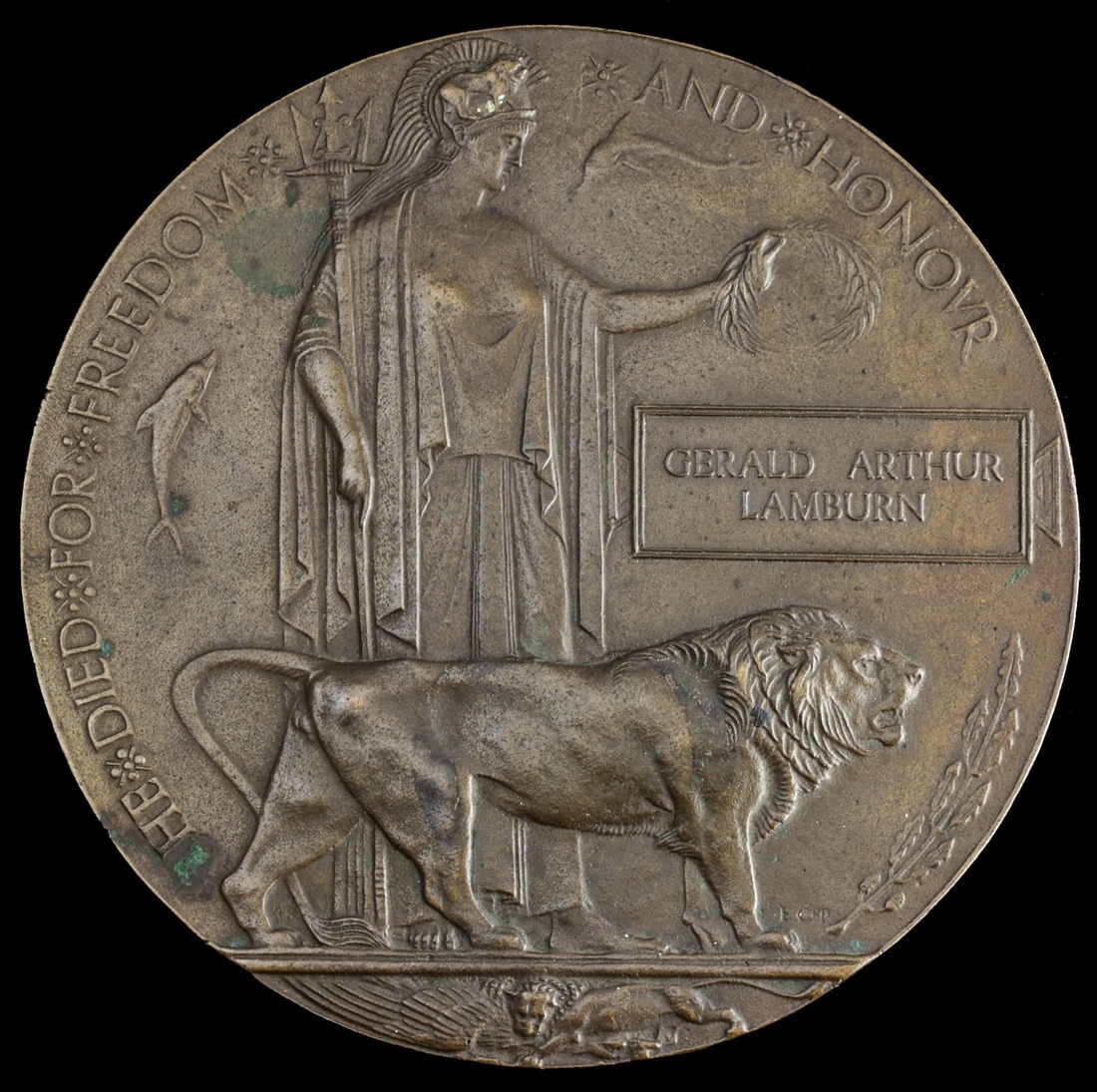
Auction: 18001 - Orders, Decorations and Medals
Lot: 1
The Great War Memorial Plaque issued in remembrance of 2nd Lieutenant G. A. Lamburn, Royal Flying Corps, who claimed a number of 'kills' in Camels of No. 46 Squadron
Memorial Plaque 1914-1918 (Gerald Arthur Lamburn), good very fine
Gerald Arthur Lamburn was born on 8 April 1899 and lived at 20 King's Mansions, Lawrence Street, Chelsea S.W.3, with his father, Frank Lamburn. His mother lived at 111 Eaton Terrace, Eaton Square, S.W.1.
Educated at St. Cyprian's, Eastbourne, and Haileybury School, young Gerald served in the School O.T.C. from September 1913 to April 1916 and enlisted in the Artists' Rifles.
He was subsequently commissioned 2nd Lieutenant in the Royal Flying Corps in July 1917, after a month of pilot training at No. 5 R.F.C. School of Aeronautics, Denham Camp; his medical records note 6/6 vision without glasses.
Initially posted to No. 46 Squadron, which was equipped with Sopwith Camels, it would not be long before he achieved the first of a number of 'kills' and shared 'kills' over the Western Front. His combat report dated 28 December 1917, in association with his Observer, 2nd Lieutenant H. N. C. Robinson, takes up the story:
'Whilst on C.O.P. at 13,000 feet over Havrincourt Wood, we saw Archie bursts west of us. Going in that direction we found a yellow Pfalz two-seater going east. We fired up at him about 200 rounds at 200 yards range. The E.A. disappeared into a cloud and immediately afterwards we observed him falling in flames. His right wing folded back, but then he disappeared from view about three miles west of Havrincourt.'
On 20 May 1918, Lamburn claimed another victim:
'Whilst on O.P. at 7.15 a.m. an E.A. two-seater was seen approaching our lines at 10,000 ft. The patrol manoeuvred and got under his tail from the sun. E.A. had not yet seen them. Lt. Lamburn pulled up at it firing 50 rounds from 100 yards range. E.A. immediately turned and the Observer began firing at Lt. Preston who was under his tail.'
Eventually, after a considerable scrap, the enemy aircraft turned on its back and both the right planes folded back and fell off, leading to its demise.
Just 10 minutes later, Lamburn fired 80 rounds into a second two-seater, just south of Merville at 4,000 feet. Once again, harried by a number of Camels, the enemy aircraft did a stall turn and was seen to go down vertically, although owing to intense fire from the ground, its fate was not ascertained.
On 30 July 1918, Lamburn was again in action over Merville:
'Diving on it from the front, he fired 100 rounds at 150 yards range. E.A. put his nose down and was last seen still gliding down at 1000 ft. where he was lost in the mist.'
Aside from air-to-air combat, Lamburn was involved in numerous strafing missions on German trenches, transport and artillery batteries. On 1 April 1918, he was assigned to attack an enemy machine-gun emplacement, whilst other targets included balloons and infantry; the Squadron's record book for 25 April 1918 notes him as gaining 'three direct hits on infantry in the field' and 50 rounds (fired) at same target.
Rested in the summer of 1918, Lamburn was transferred to No. 1 Fighting School as a Camel pilot. Tragically, he was killed in a flying accident on 30 September 1918. He is buried at Girvan (Doune) Cemetery, Glasgow; his name also commemorated on the Haileybury School Memorial.
Sold with copied service details and combat reports, together with photocopies of No Parachute by Arthur G. Lee, in which Lamburn is mentioned.
Subject to 20% VAT on Buyer’s Premium. For more information please view Terms and Conditions for Buyers.
Sold for
£210




